Peggy Orenstein's Blog, page 5
August 5, 2012
GAP: ABC’s of Back to School Stereotypes?
Reader Jocelyn Conway Malone was strolling by the GAP the other day and noticed the difference between their back-to-school clothes marketing to girls and for boys. Feel free to tell the company how you feel about skinny jewel-box girls versus “active stretch”"made-to-move” boys at the following address: custserv@gap.com (subject line: marketing & advertising)
Girls:

Boys:

August 2, 2012
Disney Princesses Circa 2012: I’m Too Sexy For My Gown?
So, while we’re on the topic of how the Disney Princesses–the brand that parents go to to stave off premature sexualization of their innocent girls–are changing, let’s take a look at Belle. Recall that the message of “Beauty and the Beast” is that true beauty comes from within (though you could also argue it teaches that if you hang out with an abusive guy long enough he turns into a prince…). Now let’s look at how Belle has changed since her debut in 1991.
Here she is in the movie, just a girl and her book, singing, as one does:
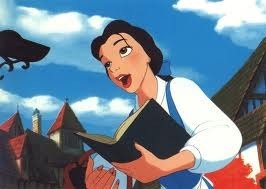
Here she is, also in the movie, in her iconic yellow gown, the one that has made countless preschool girls rip the necks of their t-shirts because “princesses don’t show their shoulders” (people tell me that all the time):

Now here is the BRAND NEW BELLE circa 2012 from the Disney store site, pictured on a girl’s nightie:
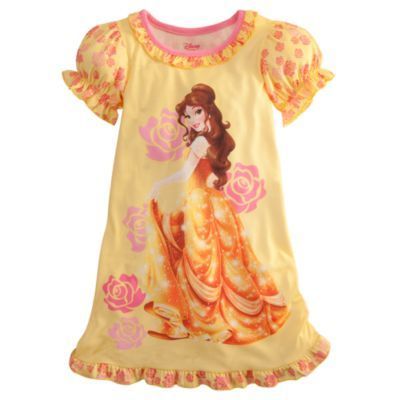
Whoa. Hotsy-totsy. Like I want my 4-year-old wearing pajamas with THAT expression on them.
Moving on, check out Aurora (Sleeping Beauty) circa 1959:
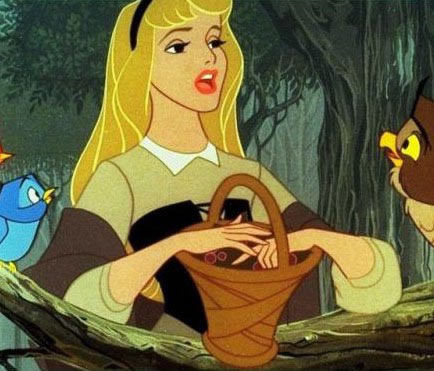
And the new, 2012, souped-up version:

Nor is it jus t classic princesses that have been remade. Here’s Rapunzel in her movie:
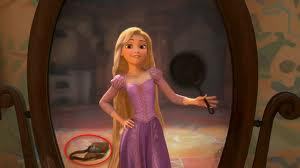
And Rapunzel on the Disney Store site:

Subtler remake, but big on the vapid.
So, still think Disney is the antidote to girls’ early sexualization? Or is it the enabler?
As always, I don’t think Disney is involve in a CONSPIRACY or anything. The company’s wares reflect the changing taste of their demographic and it’s the change that’s disturbing. It’s also right in line with a study of published last month in the journal Sex Roles on self-sexualization among elementary school-aged girls. According to a report in Live Science, psychologists at Knox College in Galesburg, Illinois used paper dolls to assess self-sexualization in sixty girls ages 6-9 recruited largely from public schools. The girls were shown two dolls: one was dressed in tight, revealing “sexy” clothes and the other in a trendy but covered-up, loose outfit. Both dolls, as you can see below, were skinny and would be considered “pretty” by little girls.
Using a different set of dolls for each question, the researchers then asked each girl to choose the doll that: looked like herself, looked how she wanted to look, was the popular girl in school, was the girl she wanted to play with.

In every category, the girls most often chose the “sexy” doll.
The results were most significant in two categories: 68 percent of the girls said the doll looked how she wanted to look, and 72 percent said she was more popular than the non-sexy doll.
“It’s very possible that girls wanted to look like the sexy doll because they believe sexiness leads to popularity, which comes with many social advantages,” explained lead researcher Christy Starr, who was particularly surprised at how many 6- to 7-year-old girls chose the sexualized doll as their ideal self.
Other studies have found that sexiness boosts popularity among girls but not boys. “Although the desire to be popular is not uniquely female, the pressure to be sexy in order to be popular is.”
Back to Disney. The new princesses reflect the changes in how girls’ see themselves (and what they want mirrored in the toys they choose–not only the new princesses but Monster High, and the upcoming Bratzillaz and Novistars dolls). As the first foray into popular culture, the new royalty–which Disney is the first to call “aspirational”– also both prime girls for that sexualization and fuel the trend.
As always, it’s up to those of us who care about girls well-being–parents, siblings, aunties, uncles, grandparents, teachers, advocates, friends, counselors etc etc–to raise the alarm about what’s going on and its impact. And to fight back hard and with lots and lots of fun.
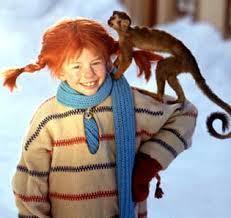
July 31, 2012
Introducing: Cinderella 2012
I’ve been writing and talking about how the princess culture morphs into the diva culture as girls get older, but the transformation works both ways. Over time, the Disney Princesses not only have become more focused on cosmetics than character, but their actual faces are increasingly influenced by pop culture divas. Take Cinderella. Here is what she looked like in 1950, in the original Disney film.:
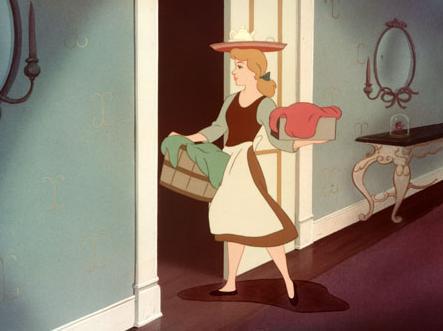
This is as a servant girl (a part of her character that has disappeared ENTIRELY, but which is the basis for her strength of character and the real reason we’re supposed to root for her…)
And at the ball:
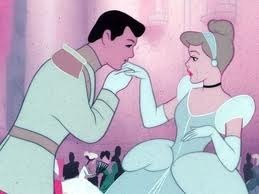
Among the interesting things to note: her hair is not that blonde and her face is sort of regular-looking.
Here she is in the post-2001 official Disney Princess era:
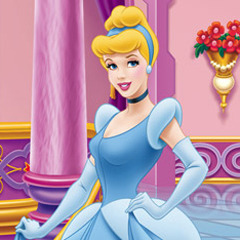
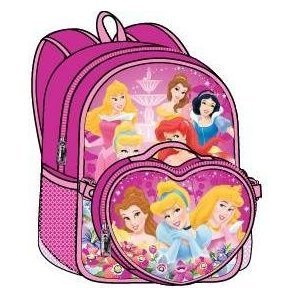
blonder, blander, coyer, flirtier, more like a parody of the princess perhaps? Note how different Belle looks than in her movie, too. And Aurora (Sleeping Beauty). The backpack is an official Disney product–one of the 1,473 results you get when you search “Disney Princess backpacks” on Amazon.
And now here is the 2012 Cinderella that has suddenly cropped up:
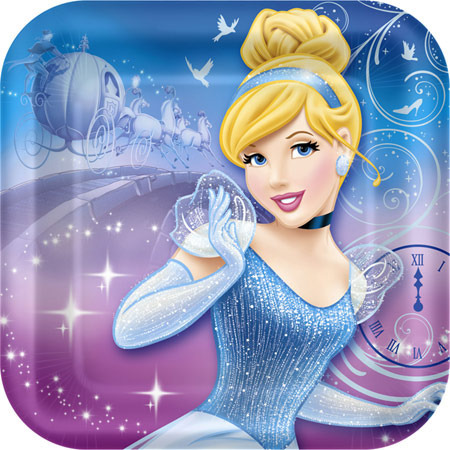
I keep trying to figure out who she looks like. A little bit Paris Hilton. A little bit Dianna Agron, a little bit Taylor Swift? She is at once older and younger than previous versions of Cinderella. The original Cinderella seemed like an adult, this one is clearly a teenager. The Disney Princess Cinderella was more fantastical in her up-do and weird head-band thingy. She had so little subtlety in her presentation that, while she was certainly an adult, she seemed to speak only to the littlest girls. This one seems like she’s about 15, which maybe dodges the whole marrying prince charming business (Disney takes a lot of heat on that idea, and they would like to side-step it).
This Cinderella’s appearance is at once more accessible than the last version and equally (maybe more) unattainable–she’s much more like the images girls see as they get older. She’s the girl they’re supposed to want to look like: blonde, pretty, skinny, a little bit sexy. She could be princess-by-day-pop -star-by-night: a new version of Hannah Montana. And guess what? It’s still an impossible, unachievable, externally-driven ideal.
Mostly, though, I think this is part of Disney’s attempt to keep the franchise going. You can only make so much off of 3-5 year olds (a mere $4 billion a year). They need to keep expanding older and younger (hence the “baby” princess dolls and toddler princess dolls on one end and the wedding dresses on the other). This new doll seems geared to the Bratz demographic. Maybe that’s why it seems a little less princess and a little more wicked stepsister…..
What do you think of the new Cindy?
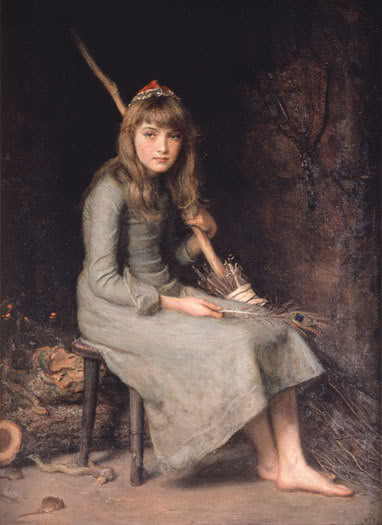
“Cinderella,” Sir John Everett Millais, 1881.
July 5, 2012
How We’ve Decamped from Science
A recent Christian Science Monitorarticle confirmed that there are still gaps between girls and boys in STEM (science, tech, engineering and math) subjects despite larger gains in education for women over the past 40 years. Among the high school graduating class of 2011, for instance, 80% of computer-science course Advanced Placement test-takers, 77% of those taking the physics exam for electricity and magnetism and 74 percent of mechanics exams. Also, 59 percent of those taking Calculus BC, the more advanced of two AP courses offered in the subject, were male.
The National Assessment of Educational Progress shows continued achievement gaps between boys and girls in STEM fields as well, especially science. Boys outperform girls at the 4th, 8th and 12th grade level with the biggest gap being in 12th grade.
No bueno, right?
I was thinking about this the other day, when I attended the orientation for my daughter’s drama camp, a wonderful program that centers on Elizabethan history, stage combat and Shakespearien drama. Be still my English major’s heart, right?
As it happens, she’s attending it with a male friend. He will be one of maybe three boys in the entire camp. I was truly saddened thinking about how the arts have become a ”girl thing” (not to mention the irony given that all the female parts in Shakespeare’s plays were originally played by boys). It’s impoverishing to boys’ souls when they are tacitly discouraged from drama, fine art, writing, reading, music.
What ARE boys doing? Well, sports, of course. Science camps. Robotics. Things my girl did up until this summer. Somehow, without my noticing, we slipped into stereotypical girl land. I think that is exactly what happens: according to the article, girls begin to fall behind in STEM in elementary school and the gap just gets wider. In part, no doubt, because of something going on in the classroom. But the culture outside of school is also to blame: from the get-go girls are rewarded in their play and by adults for how they look rather than what they do. Even the putative “science kits” for girls, which I’ve written about before are more about cultivating obsessions with beauty and consumerism than actual science. To that list I’d add the HELLACIOUS video “Science: It’s A Girl Thing” by the clearly-on-crack European Commission that’s been making the rounds lately. I guess they didn’t read the recent study of middle school girls from the University of Michigan that found that attempts to “glamorize” women in STEM seem to be less motivating to girls than more “everyday” female STEM role models. So try this video instead:
There are also the extra-curricular activities we think about for our girls. This is not an easy one for me as a parent. I’m not a STEM person myself. Nor is my husband, who is a documentarian. Still….our daughter loves math. She adores science. She is a regular at the science museum that’s down the street from our home. We listen obsessively to the fabulous They Might Be Giants “Here Comes Science” album. Here are a couple of vids from that one:
And even with all that, we ended up this summer with nary a STEM activity in sight. Nor will she see many boys in her activities over the next few months, reinforcing the idea that they are more “other” than is necessary (though we do discuss a great deal why there are no boys at horse camp or drama camp).
The truth is, I probably will never enroll my daughter in as many extra-curriculuars as I should that would keep her brain STEM alive. I am a passionate under-scheduler and I prioritize the arts, then something physical and, eventually all will fall by the wayside for Bat Mitzvah training. I depend on her school, her teachers, to stoke her interest–and all their students’ interest–in those critical subjects. I hope they do. I hope they notice when the little differences begin emerging so that they don’t become the kind of big gaps that will, later, limit them in their choice of professions and earning power.
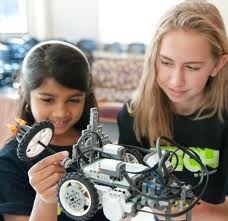
***
Yeah, I know I haven’t written about Brave. I was on a deadline. Now it seems too late. So, briefly, I thought the movie was okay. It wasn’t my favorite Pixar movie by a longshot. If considered as a “princess” movie it was certainly superior to most (though Mulan I and II are still my favorites). I could talk about how we deserve broader representations of females on film, ones that aren’t royal (it seems that a number of people can’t even remember that princesses were not, until recently, the only image for girls allowed on screen).
I could also talk about how I didn’t understand what made Merida “brave” per se. Her mother was certainly brave. But what was brave about her? How did she change? She changed her relationship to her mother because her mother changed. In the revelatory scene when she’s talking to the men her mother is feeding her lines, she’s not coming to anything. It seemed to me that what made her “brave” was that they slapped a bow and a quiver on her. But that’s a symbol, not a character trait.
I would’ve found the movie more interesting, too, if the men hadn’t been such dolts. What if her suitors were actually appealing? Was the issue that Merida didn’t want to marry someone she didn’t choose or she didn’t want to marry an idiot?
And, then, while the mother was fine, it would have been nice if there were some other female roles in the movie–a friend, say, or lady-in-waiting. It was as if Pixar was so afraid males wouldn’t go that they didn’t want to have any extraneous females muddying up the place. Imagine, for a second, a movie in which the two main characters were male and every other character in the film was female, without comment (ok, yeah, the cook in Brave was female, but still). The movie did nothing to change the statistics that the Geena Davis Institute published on the percentage of speaking characters in family movies held by females: it remains a paltry )..
But really, I think the issue is this: the discussion of the movie is symptomatic of the problem. There are so few female protagonists in family films (or any other film) that when there finally is one, we can’t just look at it as a movie. We can’t just say, yeah, it was okay. It has to have all this weight on it, all this pressure. It has to be a referendum. If there were just more, more, more then Brave could’ve just been another Pixar film, no more, no less, instead of a major event because they FINALLY, after twelve films, realized they hadn’t made one starring a woman.
So what do I think of Brave? What I think of Brave is that I wish I didn’t have to think so much about Brave. You know what would have been REALLY radical? In our screening (and I assume at theaters) there was a short before the movie called “La Luna.” It featured two old men and a little boy in a row boat whose job involved changing the phases of the moon. What if the old men and been women? What if the boy had been a girl? What if there had been no comment about that? Seeing the short before the much-ballyhooed “first Pixar princess” (note that “princess” was at some point substituted for “female” as if the two are interchangeable) reminded me that when a character is male it is assumed to be universal, and so goes without comment. Only when she is female does she become specific. I want to see so many females on screen that we, too, are universal.
Also, I wish I could get my hair to look like that.
If Brave didn’t do it for you, or even if it did, I hope you’ll also take a look at the movies on my fight fun with fun page. And be sure to check out Studio Ghibli’s latest: Arietty based on The Borrowers. Disney buried it, which was a shame.
June 4, 2012
The Dirt on Girls’ Empowerment
In CAMD I talk about how today’s “girl power” substitutes self-obsession for self-confidence, tells girls that female independence, empowerment—identity—are expressed through materialism and narcissim. Here’s another example, sent to me by a friend in LA (yeah, but it’s not JUST LA), of how those ideas keep skewing ever younger. Art and yoga? FABULOUS!!! But not when the sole focus of that “mindfulness,” “creativity,” and “empowerment” is fashion, hair and makeup. Consider this one in context of the growing number of spa science kits and the girlie “creative” craft kits….(colors of the type are from the ad)
GIRL POWER
Art & Yoga Camp
for girls aged 5 to 12
Give the special girl in your life a week of creativity, mindfulness, friendship & joy featuring Laura Fuller of Yoga in Mar Vista! Camp will be held at Pamper & Play on Westwood Boulevard, just a few blocks up from Westside Pavilion, June 25-29, noon to 3 p.m. Attendees will be divided into two groups by age. The schedule will include a healthy lunch (provided), yoga, art/activity, play and hang time. Activities will include: flip flop decorating (customize your kicks for summer); create a vision board; hand crafted eye pillows; restyling and tie dying a tee shirt and a hair feather/mani-pedi party! Lunches will be provided by Pamper & Play and prepared by participants. Lunches will include chillicious smoothies, healthy wraps, tea sandwiches, crudités and healthy chocolate treats.
We have 12 spots left, so register NOW.
Cost is $250 if you sign up by June 5 and includes 5 three-hour sessions, healthy lunch and materials. Late registration price is $280.
For more info or to register, email carole@pamperplay.com [carole (at) pamperplay (dot) com]
Visit our website or get up-to-the-minute info on facebook
Here’s a thought. You want “girl power?” How about: “GET SUPER DIRTY & Play?” (also: I’m thinking “healthy” is the p.c. concept for “fear of fat.”)
[image error]
May 17, 2012
State Home for Manic Pixies
Re: my earlier post on manic pixie dream girls (which I have corrected to give coinage credit to Nathan Rabin at A.V. Club). Here’s the ever-brilliant Anita Sarkeesian at Feminist Frequency on the subject.
And in case you missed it, here is…well, just watch and enjoy!
“Sociological Images”: Will You Marry Me?
Sociological Images is ruining my life. I can spend hours looking at their images tracking….well, everything (God and the U.S. dollar) but especially the evolution of gender: there’s their current Lego series; the periodic rants on pet ownership; how video game ads have changed; men’s/women’s toilet signs from around the world and the take-down of Zoe Deschanel-style “manic Pixie dream girls” (a term coined by one of my other fave sites: Feminist Frequency). Things you never think about, never notice, but that shape us all the same. Love. LOVE!!!
One of my favorites, is from about a year ago: a round-up of products for kids. Among them, onesies that include a list of “ingredients” on the tummy. What are boys made of? Love, energy, and dirt:
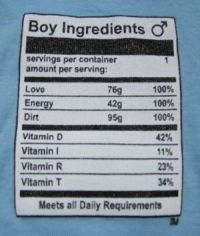
And girls? love, beauty and kindness:
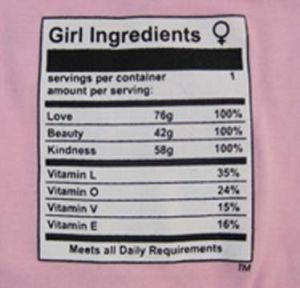
Then there’s this photo of ride-aboard trucks at Target:
The boys’ version is red and is, appropriately, called a Lil’ Fire Truck Ride-On. The pink version, on the other hand, is the Lil’ Princess Ride-On — because apparently there’s no appropriate vehicle to define as “girly,” so the easiest way to gender the toy was just to call it a thing for princesses and be done with it:
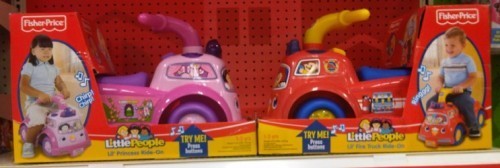
And finally a set of receiving blankies for newborns. Blue for the “little man”:
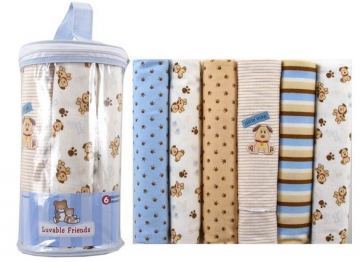
and pink for the “little cupcake” (in case, as SI quips, your baked goods are cold)
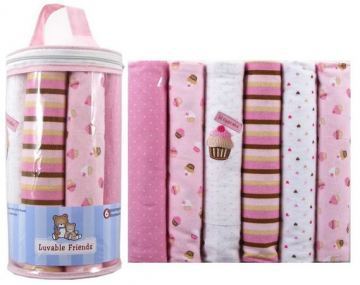
Again, I thought this was 2012, but apparently we have all been catapulted back to the set of “Mad Men.”
Check out the site yourself and you too can feel vaguely productive while getting no work done….
May 14, 2012
At Least She’s Not Dead: “Brave” Mother’s Day Trailer
Here’s one for Mother’s Day. Interesting. Posting it fast, but hope to comment here–or perhaps in “old media” soon….
Your thoughts?
May 12, 2012
Pixar: Are you “Brave” Enough to Just LET YOUR FILM BE ABOUT A GIRL?
Pixar is all but putting up signs saying, ”EVEN THOUGH BRAVE IS ABOUT A GIRL BOYS AND MEN WILL LIKE IT! WE’VE GOT DICK AND BUTT AND FART AND VAGUELY HOMOPHOBIC JOKES! SEE?NO COOTIES HERE, GUYS, NO SIRREE! YOU CAN SEE THIS AND STILL BE A MAN!”
What a bunch of cowards.
This new trailer is clearly pandering to a male audience that may have qualms about a “princess” movie.
Funny, yes, but I certainly don’t recall any equivalent assurances to women in campaigns for their previous twelve features, even when there were no female characters involved. Or was there a major aimed-at-the-ladies campaign before the original Toy Story that I missed? I thought not.
I’ve blogged about Pixar’s atrocious record on female characters before (actually multiple times). And in Cinderella Ate My Daughter I wrote:
I cannot help but feel, after waiting patiently–and sometimes not so patiently–through twelve genre-busting films about male robots, male superheroes, male cowboys, male rats, male cars, male bugs, male fish, and a small male mailman, that it would have been nice if the movie was not about a princess, even a kick-ass one. Honestly, is that too much to ask?
The range of female characters is far broader in the genius films of Hayao Miyazaki, an artist, ironically, that Pixar’s John Lasseter cites as his primary inspiration. Maybe because of that, the Japanese trailer make the film look far more compelling.
In the U.S., Dreamworks has done far better than other studios; while the female characters are still firmly secondary, generally love interests and often several pixels too thin–so not good enough–but at least they are significant and as fully drawn as the males.
Brave has now been rated PG partly, according to Entertainment Weekly, for “rude humor” inserted to keep the menfolk happy–at the expense of the family friendlier G-rating. Bummer. I’m not sure which is more insulting: that they don’t think boys and men would attend a movie with a female lead or that the way they reassure them is with potty humor. Guys, they’re not giving you much credit…..
May 11, 2012
DREAMY reviews for “Kepler’s Dream”
I wrote earlier this week about the must-read YA novel, Kepler’s Dream, which was officially published yesterday. I’m thrilled to report that the book is already racking up stellar reviews.
In this coming Sunday’s New York Times “Book Review” the discerning Dani Shapiro–herself a wonderful writer–calls the book “delightful” and “marvelous” and ”full of smart, subversive commentary on the numbing effects of contemporary youth culture.” She adds:
But in the end it is Ella’s voice–utterly captivating, idiosyncratic, rich and memorable–that ties all the pieces together in, yes, a kind of dream logic, making this not only an entertaining book but an absorbing and artful one.
From Library Journal:
Ella’s divorced mother has leukemia and her father is busy guiding trips for his fly-fishing-trip business so the 11-year-old is sent to stay with her grandmother. Neither of her parents gets along well with her father’s mother, and Ella hasn’t ever met her. She joins eccentric Violet Von Stern at her adobe home and names it The House of Mud. Under the brilliant Albuquerque’s night sky, she wishes on stars for her mom’s recovery. Her grandmother sternly corrects and lectures her, but Ella’s stay is full of interesting surprises. One of grandma’s books, Kepler’s Dream, has been stolen from her extensive library, and it’s worth thousands of dollars. Ella puts her detective skills to work to find the missing book while discovering the importance of family. Bell has created a fascinating cast of eclectic characters who are sure to capture and retain readers’ attention. Smart and thoughtful, the story sparkles like Kepler’s favorite stars in Bell’s debut offering for children.–Helen Foster James, University of California at San Diego
And Booklist:
While her mother is in treatment for leukemia, 11-year-old Ella goes to spend the summer with the grandmother she has never known. She is initially intimidated by the formidable relative she calls the GM (for grandmother or, alternately, general major). Despite worries about her mother, Ella falls into the rhythm of life in Albuquerque, befriends a few people, and begins to uncover family secrets. When the theft of a rare book, Kepler’s Dream, upsets her grandmother, Ella and a friend attempt to find it and unmask the thief. However, the mystery always takes a backseat to the revelation of characters and relationships in past and present. Punctuated by the occasional letter to her mother, Ella’s narration is fresh, distinctive, and full of dry humor. After she discovers that her grandmother is a stickler for correct word usage, Ella privately refers to the GM’s home as the GGCF (Good Grammar Correctional Facility). One of the pleasures of the novel is Ella’s gradual realization of what she has in common with her initially aloof grandmother. Two strong individuals under stress, they come across as fully rounded characters, and even the minor players here are distinctive, credible, and memorable. An impressive debut for Bell. — Carolyn Phelan
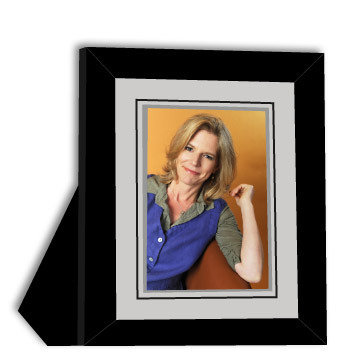
Congratulations, Juliet Bell!
I feel so passionately about this book. I so want to get it out there. Rare is the book for middle graders these days that is beautifully written; has a very real girl at its heart; and has a well-plotted, age-appropriate, gore-free story!
Peggy Orenstein's Blog
- Peggy Orenstein's profile
- 722 followers



